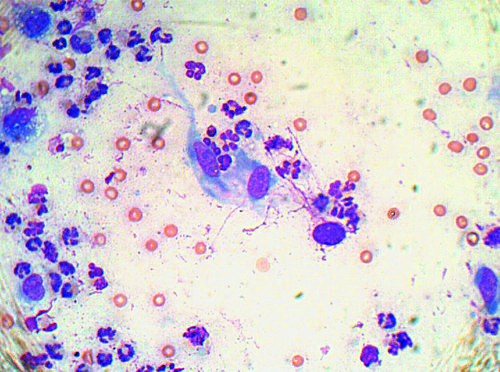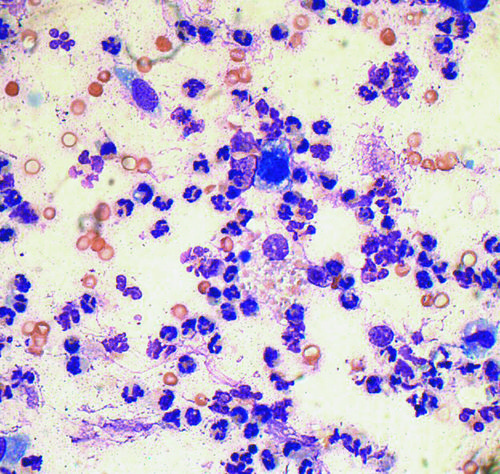Difference between revisions of "Cytology Q&A 17"
Ggaitskell (talk | contribs) |
|||
| (One intermediate revision by one other user not shown) | |||
| Line 1: | Line 1: | ||
| − | {{Template:Manson}} | + | {{Template:Manson |
| + | |book = Cytology Q&A}} | ||
| − | [[Image:|centre|500px]] | + | [[Image:Cytology 17a.JPG|centre|500px]] |
| + | <br> | ||
| + | [[Image:Cytology 17b.JPG|centre|500px]] | ||
<br /> | <br /> | ||
Latest revision as of 18:11, 28 September 2011
| This question was provided by Manson Publishing as part of the OVAL Project. See more Cytology Q&A. |
A seven-year-old neutered male Jack Russell Terrier presented with an interdigital mass of several weeks’ duration. Smears were made from an aspirate of the mass.
| Question | Answer | Article | |
| What features are illustrated in these photomicrographs (both Wright–Giemsa, ×50 oil)? |
|
Link to Article | |
| What is your interpretation of these findings? | The cytological features are consistent with moderate to marked pyogranulomatous inflammation with spindle cell proliferation, most likely fibroplasia. |
Link to Article | |
| What comments do you have regarding these findings? |
Atypical spindle cells with nucleoli and increased numbers typical of proliferation represent a diagnostic problem for all cytologists. |
Link to Article | |

